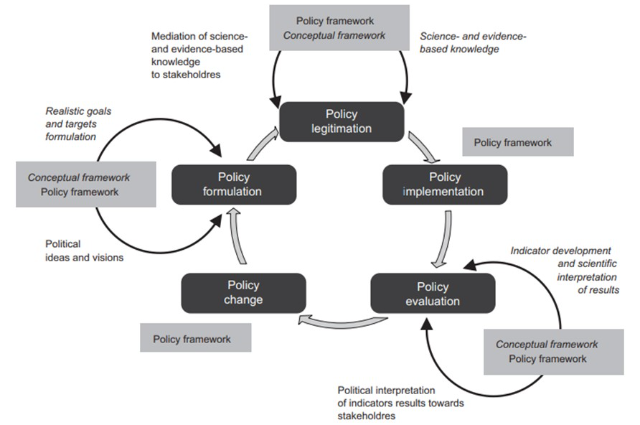
Photo by Firmbee.com on Unsplash
Introduction:
The UN General Assembly established the Open Working Group, which made a proposal for a set of global Sustainable Development Goals (SDGs) in New York. There are 17 goals and 169 targets total. In addition, a draft set of 330 indicators was unveiled in March 2015. While some SDGs contain new ideas, others build upon the achievements of previous Millennium Development Goals. A thorough analysis has shown that different indicators with differing degrees of quality (with regard to meeting specific requirements) have been put forth to evaluate sustainable development. Although a lot of research has been done theoretically on indicator quality requirements, users are frequently unsure of how well the indicators capture the phenomena they are seeing.
Thus, we emphasize the significance of operationalizing the aims of the Sustainable Development Goals and assessing the indicators' relevance - the most crucial of the indicators' quality attributes. The existing structure of the proposed SDGs and their targets has established a framework for policy; however, the indicators may be unclear in the absence of comprehensive professional and scientific follow-up on their operationalization. As a result, we contend that the development of a conceptual framework is necessary in order to choose relevant indicators for targets from preexisting sets or create new ones. To guarantee that the indicators are relevant and that users (decision- and policy-makers as well as the general public) receive clear, unambiguous messages, experts should concentrate on the "indicator indicated fact" relationship. In order to help, we finally provide some suggestions for indication providers.

Fig. 1. A policy cycle linked to policy and conceptual frameworks.
Source: Wu, X., Ramesh, M., & Howlett, M. (2018). Policy capacity: Conceptual framework and essential components. Policy capacity and governance: Assessing governmental competences and capabilities in theory and practice, 1-25.
Indicators that are especially connected to the SDGs and their goals.
The SDGs and their objectives must be measurable through the use of indicators (qualitative and quantitative). Particular focus needs to be placed to overlooked or understudied SD aspects:
Immeasurable
- The indicators ought to be pertinent, that is, directly related to the facts that are indicated.
- Other attributes (good technique, validity, etc.) should also be included in the indicators.
- The set of indicators needs to be "manageable in size."
A Decade of Action
The SDGs must be implemented by the year 2030. Anónio Gutteres, the UN Secretary-General, demanded ten years of work in three crucial areas in 2019."Global Action" calls for fearless leadership, "local action" to truly improve people's lives, and "people action" to mobilize coalitions, hold leaders accountable, and empower individuals to adopt the Global Goals.
The COVID-19 has, however, significantly slowed down progress toward many of the SDGs, making it more important than ever to put them into practice.
For several of the SDGs, we were already well behind schedule in terms of development. Healthcare was already falling short of its 2030 goal, and the coronavirus has seriously jeopardized the progress that has been done thus far, including the reduction of malaria cases.
Data gaps impede effective monitoring.
Data that will be used as indicators must be readily available and routinely provided in order to track the SDGs' development. The World Bank claims that evaluating country-level progress toward the targets has been difficult due to significant data shortages. According to a 2020 study, nations provided one or more data points for the preceding four years on slightly more than half of the SDG indicators on average.
More recently, the amount of data needed to monitor progress on SDG5 (gender equality) has dropped to just 47%, effectively making women and girls invisible and slowing down the rate of advancement.
We present the following information regarding the SDGs:
- The appropriately operationalized targets will satisfy the requirements for SMART targets They will highlight discrepancies in the data, probable variable overlaps, and their causal, quasi-causal, and falsely causal (just statistical) relationships
- To cover pertinent aspects of all the goals and targets, a significant number—many hundreds—of very detailed, technically and methodologically sophisticated indicators will be required. It is crucial to remember the significance of headline indicators in terms of educating and warning the public, without which the SDGs are nothing more than a bureaucratic formality.
- The corresponding indicators must therefore adhere to all sound scientific guidelines (substantially supported research, validated by several peer-reviewed studies) and respect data limitations, but they also need to be extremely relevant for the stated goal.
Financial conditions affect the advancement of global development
The global economy has exceeded all forecasts, even in the face of the most concentrated series of interest rate hikes in recent memory to combat persistent inflation, most notably by the US Federal Reserve. Although the growth pace has slowed and volatility has grown due to tightening financial conditions, overall economic conditions are still strong. This is mostly attributable to sectors like services experiencing a protracted post-pandemic demand rebound as well as the mainstreaming of powerful factors like innovation, technology, digitalization, clean energy, sustainability, and ESG. Because of this, a wide range of economic sectors are experiencing profound structural changes that are opening up new opportunities for growth and investment.
Conclusions:
The process of further developing the SDGs is anticipated to begin in 2015, around the time that a final choice on an indicator set is anticipated. Even if the final adoption of the indicators is delayed or postponed, we advise giving the important task of target operationalization enough time. The process of choosing and developing the SDGs could draw from the most recent MDG experience, particularly in terms of the policy framework establishment. It is important to remember that the MDGs have been generally well received, and the SDGs may be considered as a continuation of this trend. However, in terms of the conceptual framework, substantial support from specialists and scientists is required to create and/or implement suitable methods for bolstering the mostly disregarded.
Although achieving the UN Sustainable Development Goals is a top priority on a global scale, the significant expenses involved may prevent full implementation. This begs the question: Is it financially prudent to implement the SDGs? This article discusses the necessity to increase public understanding of the financial advantages of achieving the global goals and answers the issue. It also outlines and addresses the primary funding shortages needed to fulfill the Sustainable Development Goals by 2030.
Every goal, especially the indicators, needs to be carefully examined by specialists. It can result in a reduction in their number or in streamlining. Upon close examination of the current indicator framework
. . .
References:
- Sadiq, M., Ngo, T. Q., Pantamee, A. A., Khudoykulov, K., Ngan, T. T., & Tan, L. P. (2023). The role of environmental social and governance in achieving sustainable development goals: evidence from ASEAN countries. Economic research-Ekonomska istraživanja, 36(1), 170-190.
- Sachs, J. D., Schmidt-Traub, G., Mazzucato, M., Messner, D., Nakicenovic, N., & Rockström, J. (2019). Six transformations to achieve the sustainable development goals. Nature sustainability, 2(9), 805-814.
- Siddiqui, A., Altekar, S., Kautish, P., Fulzele, S., Kulkarni, N., Siddiqui, M., & Bashir, M. F. (2023). Review of measurement of sustainable development goals: a comprehensive bibliometric and visualized analysis. Environmental Science and Pollution Research, 30(40), 91761-91779.
- Shulla, K., & Leal-Filho, W. (2023). Achieving the UN Agenda 2030: Overall actions for the successful implementation of the Sustainable Development Goals before and after the 2030 deadline.
- Morte, I. B. B., Ofélia de Queiroz, F. A., Morgado, C. R., & de Medeiros, J. L. (2023). Electrification and Decarbonization: A Critical Review of Interconnected Sectors, Policies, and Sustainable Development Goals. Energy Storage and Saving.
